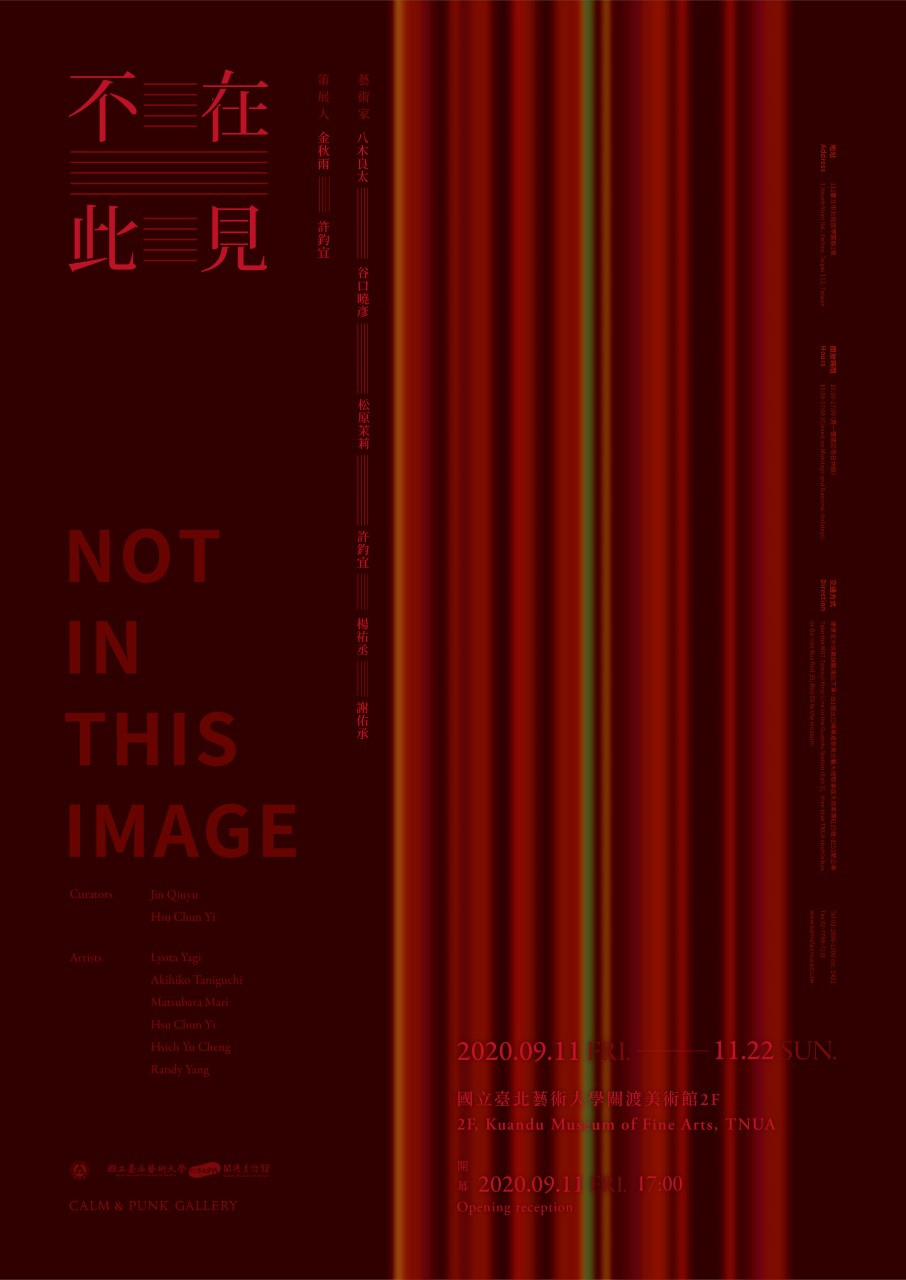不在此見/ 關渡美術館
NOT IN THIS IMAGE / KdMoFa
策展人 Curator:
金秋雨 Jin Qiuyu
許鈞宜 Hsu Chun Yi
藝術家 Artists:
八木良太 Lyota Yagi
谷口曉彥 Akihiko Taniguchi
松原茉莉 Mari Matsubara
許鈞宜 Hsu Chun Yi
楊祐丞 Randy Yang
謝佑承 Hsieh Yu Cheng
無法看見,指稱某事物不存在於眼前,實際上並不意味著可見性的喪失。相反的,正是察覺到某物的不在場,才確實看見了什麼,因為對於空缺本身的確認無疑是一個實際的感知。當觀者的目光徒勞地回返,卻又抵達他處,此刻既是雙眼與大腦的片刻斷裂,亦是感覺與意義的分離。這一情況正回應著當代的觀看問題,因為無論在生產或接收上,今日的影像皆過於側重在內容的裝載與讀取,以至於限制了其自身的可塑性。在強化感官與訊息的同時,我們是否忽視了只存在於個體意識中那即將到來,卻轉瞬即逝的精神影像?
本展覽並不寫入更多的圖像和檔案,而是試圖描繪出一幅趨向空白的視域。這或許是影像最為赤裸、微弱,但又拒絕展示自身的狀態:持續地看,卻毫無所獲。於是,一切所見必須被二次經驗,在由媒介與物質產生的光影外,總有一幅不被雙眼捕獲的影像。它的真正在場必然不在於可見範疇內,而是僅存於非現在(non-present)的時刻、在光線的外邊——即影像的之外、之間、之前與之後成形。我們能否將此些被抽離內容的影像表面,轉化為能與觀者的想像、思維進行交互的「介面」?
影像將不再如我們所見,甚至不在所見當中。至此,作品必須成為某種「外部」的影像,一切顯影條件將是令影像撤空自身,不再裝載著訊息、敘事、語法,而成為純粹空白的可能性。觀看,亦不再是知覺在光線下的立即抵達,而是某種遲滯。必須就地創造不在此見的狀態,才可能與影像遭遇。
Invisible refers to something not present before the eyes. Yet, it does not necessarily indicate the loss of visibility thereof in reality. On the contrary, it is the awareness of absence of something that we can actually see something, for confirmation of absence is indeed an actual perception. Where a viewer’s sight traverses in futile and arrives elsewhere, it is the temporary disconnection between the eyes and the brain as well as the separation of feelings and meanings. Such circumstances precisely echo issues with the contemporary viewing, for either in production or reception, the image today attaches too much emphasis on content loading and reading, thus limiting the plasticity of image itself. While we enhance senses and messages, do we overlook the imminent yet fleeting mental image that dwells only in individual consciousness?
The Exhibition does not write more images and files. Instead, it endeavors to depict a field of view close to emptiness. It is perhaps the most naked, weak yet refusing condition of image to exhibit itself: seeing unceasingly, yet gaining nothing. Hence, everything seen must be experienced a second time. Beyond the light and shadow rendered by mediums and matters, there is constantly an image escaping the eyes. Its true presence is essentially not within the visible horizon, but merely in the non-present moment outside of light, i.e. coming into being beyond, amidst, before, and after image. Can we transform the surface of image with its content removed into the surface that interacts with the imagination and thinking of viewers?
Image shall no longer as what we see it is, and even not within what we see. As such, a work has to become an “external” image. All the criteria for image visibility shall be image emptying itself, loading no message, narrative, or grammar, but the pure empty possibility. Viewing shall henceforth no longer an immediate arrival of perception under the light, but a delay. A state of not in this image is to be created on site for the possible encounter with image.






